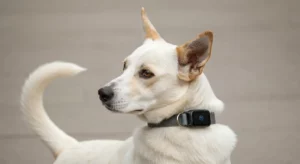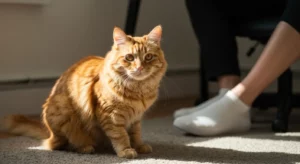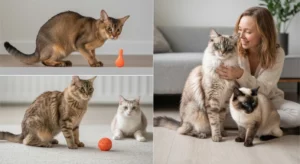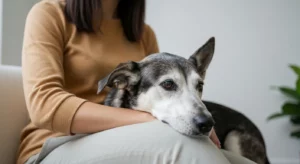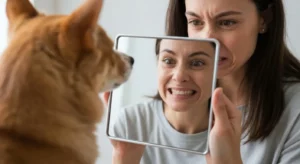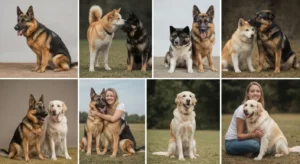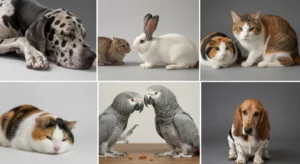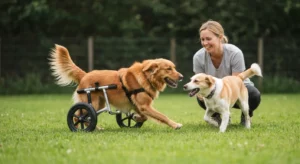As a Certified Applied Animal Behaviorist with over a decade of experience helping owners understand and connect with their pets, I’ve seen firsthand what happens when an animal’s mind is left idle. We’re all experts at providing food, water, and shelter, but we often overlook a critical component of their well-being: mental stimulation. A bored pet is often a stressed pet, and that stress can manifest in destructive chewing, excessive barking, anxiety, and even depression. Think of it as a job for their brain; without one, they’ll invent their own, and you probably won’t like the results.
Physical exercise is vital, but it’s only half the equation. Mental exercise tires your pet out in a more profound, satisfying way. It engages their natural instincts, builds their confidence, and strengthens the bond you share. The good news is that providing this enrichment doesn’t have to be expensive or complicated.
This guide is designed to give you practical, expert-approved strategies to enrich your pet’s life. Here are eight powerful ways to provide the mental stimulation for pets that they so desperately need.
-
Tip #1: Ditch the Food Bowl and Encourage Foraging
The Point: Stop serving “free” meals in a bowl and make your pet work for their food.
The ‘Why’: In the wild, animals spend a significant portion of their day foraging, hunting, and problem-solving to find food. This is a powerful, instinctual drive. When we simply dump kibble into a bowl, that entire mental process is eliminated, and the meal is over in 30 seconds. By turning mealtime into a game, you tap into these natural behaviors. This not only provides crucial mental stimulation but also slows down eating, which can aid digestion and prevent dangerous conditions like bloat in dogs.
The Actionable Advice (The ‘How’):
Start slowly to avoid frustrating your pet. The goal is to build confidence, not create anxiety around food.For Dogs:
- Snuffle Mats: These are fabric mats with fleece strips designed for hiding dry food. Your dog must use their nose to sniff out and find every piece. It’s an excellent starting point for any dog.
- Food-Dispensing Toys: Invest in toys like a classic Kong, a Wobbler, or puzzle balls. Start by making it very easy for the food to fall out. As your dog gets better, you can increase the difficulty. For a Kong, you can eventually freeze wet food or plain yogurt inside for a longer-lasting challenge.
- DIY Foraging: Don’t have a special toy? No problem. Scatter your dog’s kibble in the grass in your backyard (ensure it’s free of pesticides). Inside, you can use a muffin tin: place kibble in each cup and cover some with tennis balls or other toys that your dog has to remove to get the food.
For Cats:
- Puzzle Feeders: There are many excellent puzzle feeders designed for cats that require them to bat, slide, or lift pieces to reveal food. These engage their paws and their minds.
- Hunting Games: Hide small portions of their meal in different spots around the house—on a cat tree, under a rug, on a low shelf. This encourages them to “hunt” for their food, satisfying their predatory sequence.
- Food-Dispensing Balls: A simple plastic ball that drops kibble as it’s rolled is a perfect way to get your cat moving and thinking.
-
Tip #2: Engage Their Super-Powered Sense of Smell with Scent Work
The Point: Create simple games that challenge your pet—especially your dog—to use their nose.
The ‘Why’: A dog’s sense of smell is their primary sense, estimated to be 10,000 to 100,000 times more powerful than ours. Using their nose is incredibly taxing and satisfying for them. A 15-minute scent game can be more tiring than a 30-minute run. Scent work is a low-impact activity, making it perfect for puppies, senior dogs, and dogs with physical limitations. It builds focus and confidence as they learn to solve problems independently.
The Actionable Advice (The ‘How’):
You don’t need to be a professional trainer to start with basic nose games. Use high-value, smelly treats to make it easy for them to succeed at first.Game 1: The Shell Game.
1. Get three plastic cups or small containers. With your pet watching, place a treat under one cup.
2. Encourage your pet to find it. When they nudge or paw at the correct cup, praise them enthusiastically and give them the treat.
3. Once they get the hang of it, you can start shuffling the cups around to increase the difficulty.Game 2: Find It!
1. Have your pet sit and stay. Let them watch you place a treat in an obvious spot a few feet away.
2. Release them with a cue like “Find it!” and praise them when they eat the treat.
3. Gradually increase the difficulty by hiding treats in another room, behind furniture, or under a blanket. The goal is to transition from them watching you hide it to them using only their nose to find it.Even cats can enjoy a modified version of this, especially if you use a particularly high-value treat like a piece of tuna or a commercial lickable treat.
-
Tip #3: Teach Something New with Short, Fun Training Sessions
The Point: Go beyond “sit” and “stay.” Teaching new cues, tricks, or behaviors is a powerful brain workout.
The ‘Why’: The process of learning requires immense concentration. Your pet has to figure out what you’re asking, how to offer the correct behavior, and what earns them a reward. This type of mental stimulation for pets strengthens your communication and deepens your bond. It also builds what we call “behavioral flexibility,” teaching your pet how to learn and problem-solve, which is a valuable life skill.
The Actionable Advice (The ‘How’):
Keep training sessions short (5-10 minutes max), positive, and fun. Always end on a high note when your pet has successfully performed a behavior.Ideas for Dogs:
- Target Training (“Touch”): Teach your dog to touch their nose to the palm of your hand or to a “target stick” (like a wooden spoon). This is a foundation for many more complex behaviors.
- “Go to Your Mat”: This is an incredibly useful life skill. Teach your dog to go to a specific bed or mat and lie down. It provides them with a “safe spot” and helps with impulse control.
- Fun Tricks: Teach “spin,” “roll over,” or “bow.” The goal isn’t perfect obedience; it’s the process of working together.
Ideas for Cats:
- Yes, you can train a cat! They respond wonderfully to positive reinforcement, especially clicker training.
- “High Five”: Lure your cat’s paw up with a treat until they touch your hand. Mark the moment with a “Yes!” or a click, and reward.
- Come When Called: Use a specific, happy-sounding word that you only use for this training. Say the word, and immediately give a high-value treat. Practice from short distances first. This is also a vital safety skill.
-
Tip #4: Rotate Toys to Keep Them “Novel” and Interesting
The Point: Don’t leave all of your pet’s toys out all the time. Put most of them away and rotate them every few days.
The ‘Why’: Animals, like humans, experience habituation. A toy that is always available loses its value and becomes part of the boring background scenery. When you re-introduce a toy that has been put away for a week, it feels new and exciting again. This concept of “novelty” is a core principle of environmental enrichment. It sparks curiosity and encourages play without you having to constantly buy new things.
The Actionable Advice (The ‘How’):
1. Gather All Toys: Collect every single one of your pet’s toys.
2. Sort and Divide: Divide them into 3 or 4 groups. Try to have a mix of types in each group (e.g., a chew toy, a plush toy, a ball).
3. The Rotation System: Put away all but one group of toys. Every week, put away the current group and bring out a “new” one.
4. Make it an Event: When you bring out the new batch of toys, present them with excitement to build anticipation. This simple act of toy rotation is a zero-cost way to provide regular pet enrichment. -
Tip #5: Provide Opportunities for Problem-Solving
The Point: Give your pet a “job” or a puzzle that they have to figure out on their own.
The ‘Why’: Many dog breeds were created to perform complex tasks—herding, retrieving, guarding. When these intelligent animals are left without a job, they can become frustrated and anxious. Providing structured problems allows them to use their brains in a productive way, building confidence and independence. Even for cats, figuring out a puzzle taps into their cognitive abilities and exploratory nature.
The Actionable Advice (The ‘How’):
This is about setting up a challenge that your pet can reasonably solve.DIY Dog Puzzles:
- The Box-in-a-Box Game: Place a treat inside a small, open cardboard box. Place that box inside a slightly larger one. Let your dog figure out how to get the treat. You can gradually increase the complexity by using more boxes or loosely closing the lids.
- The Towel Game: Lay a towel flat on the floor. Sprinkle some treats on it. Let your dog get them. Next, fold the towel in half over the treats. Let them figure out how to nose it open. You can progress to loosely rolling the treats up in the towel.
Cat Enrichment:
- The Toilet Paper Roll Toy: Take an empty toilet paper roll, place a few treats inside, and fold the ends in. Your cat will have to bat it around, shred it, and manipulate it to get the treats out.
- Interactive Cat Toys: Many electronic toys have modes that move a feather or light randomly, forcing your cat to predict and strategize. Supervise use to ensure safety.
-
Tip #6: Upgrade Your Play Sessions to be More Interactive
The Point: Move beyond simple fetch or laser chasing and engage in structured, interactive play.
The ‘Why’: Mindless, repetitive physical activity isn’t the same as mentally engaging play. Interactive play involves rules, impulse control, and teamwork between you and your pet. It requires them to think about what they’re doing, not just react. This builds a more thoughtful, responsive pet and strengthens your relationship.
The Actionable Advice (The ‘How’):
For Dogs – Structured Tug-of-War:
Tug is a fantastic game when played with rules. It teaches your dog how to get excited and then calm down on cue.
1. The Cue: Teach a “Take it” cue to start the game and an “Out” or “Drop it” cue to end it.
2. The Rule: The game stops immediately if your dog’s teeth touch your skin. Don’t scold; just drop the toy and walk away for 30 seconds.
3. You Control the Game: Practice asking for the “Out” cue frequently. When they drop the toy, praise them, and then reward them by immediately restarting the game. This teaches them that giving up the toy is a good thing.For Cats – “Prey Sequence” Play:
Cats are hardwired to hunt. A laser pointer can be frustrating because they can never “catch” the dot. A wand toy is far better.
1. Mimic Prey: Don’t just dangle the toy in your cat’s face. Make it act like a bird or a mouse. Have it flutter, dart behind furniture, pause, and twitch. This engages their hunting brain.
2. Let Them Win: Allow your cat to successfully pounce on and “kill” the toy periodically. This is crucial for their satisfaction.
3. Wind Down: At the end of the session (10-15 minutes), let them have a final, satisfying catch. Then, put the toy away and give them a small treat or meal to complete the natural “hunt, catch, kill, eat” sequence. -
Tip #7: Let Your Dog Lead on a “Sniffari” Walk
The Point: Dedicate some of your walks to your dog’s nose, not your destination or pace.
The ‘Why’: A standard walk is often about physical exercise and potty breaks, with the human dictating the pace and direction. A “sniffari” (a safari of sniffing) is a walk dedicated entirely to your dog’s mental enrichment. Allowing them to stop and process all the information in their environment—the “pee-mail” left by other dogs, the scent of a squirrel from an hour ago—is a calming and mentally taxing activity. It cedes control to them in a safe way, which builds confidence and reduces stress.
The Actionable Advice (The ‘How’):
1. Use the Right Equipment: Use a long line (15-20 feet) and a back-clip harness. This gives your dog freedom to explore without putting pressure on their neck.
2. Choose a Location: A quiet park, a hiking trail, or even just a different neighborhood street works well.
3. Let Go of the Goal: The goal of this walk is not to get anywhere. It’s to let your dog be a dog. Let them lead the way. If they want to spend five minutes sniffing one blade of grass, let them.
4. Your Job is to be an Anchor: You are there simply to keep them safe. Hold the end of the long line and follow along. This simple shift in mindset turns a routine walk into a powerful tool for your dog’s mental wellness. -
Tip #8: Enrich Their Environment with New Sights and Sounds
The Point: Change what your pet sees, hears, and experiences within their home environment.
The ‘Why’: A static environment is a boring one. Providing new sensory input stimulates your pet’s brain and prevents the lethargy that comes from seeing the same four walls every single day. This is especially critical for indoor cats or dogs who are left alone for long periods.
The Actionable Advice (The ‘How’):
For Cats:- The Window to the World: A window perch is essential. You can enhance it by placing a bird feeder or bird bath outside the window to create “cat TV.”
- Vertical Space: Cats feel safe and stimulated when they can survey their territory from up high. Invest in cat trees, or install sturdy wall shelves to create a feline highway.
- Bring the Outside In: Safely bring in novel items for them to explore, like a large leaf, a non-toxic branch, or a pinecone. A simple cardboard box or a paper bag (with handles cut off) can provide hours of fun.
For Dogs and Cats:
- Auditory Enrichment: When you’re gone, leave on the radio, a podcast, or specialized pet music designed to be calming. Some services even offer “dog TV” or “cat TV” with videos of squirrels and birds.
- Create a “Dig Box”: For dogs with a passion for digging, a designated sandbox or a kid’s paddling pool filled with dirt or sand can be a fantastic, appropriate outlet for this instinctual behavior. You can hide toys or treats in it for extra fun.
Providing robust mental stimulation is one of the greatest gifts you can give your pet. It enriches their days, prevents behavioral problems, and turns a good home into a great one. Start with one or two of these tips this week, and watch your pet become happier, calmer, and more engaged with the world around them.




